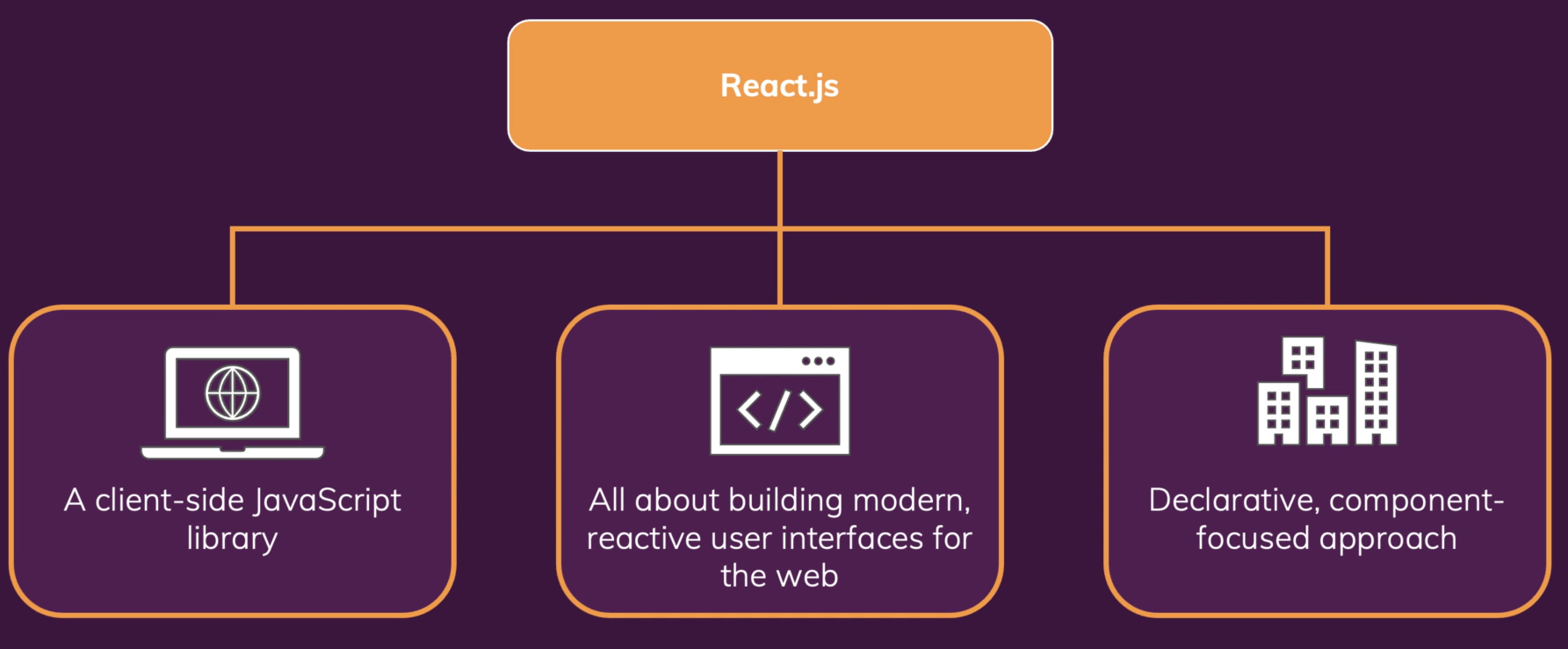React is a client-side JavaScript library. A library is a collection of codes that can be reused. React is a component-based collection of vanilla javascript codes that helps us to build interfaces for websites, mobile apps, or even desktop apps.
ReactJS is All about building Morden, the reactive user interface for the web.
Basically, react helps us to manipulate the front end of an application. To make the user interface more user-friendly or eye pleasant we can use many packages with the help of npm (node package module) or yarn.

Prerequisites to working with ReactJS
RectJS is a modern javascript-based library so the first required thing is, You should have hands-on experience with Core JavaScript concepts, vanilla JavaScript, HTML, and DOM manipulation.
Why react is too popular?
According to ReactJS’s official website,
React is a JavaScript library for building user interfaces.
Before ReactJS, to build a website and make it interactive enough for users we had to use JQuery and Vanilla JavaScript. JQuery is an amazing library though. But with vanilla JavaScript, we had to write more codes to make the site interactive. Which reduces the readability of the code and makes the site much heavier.
After the introduction of ReactJS, making the user interface became much easier. React is a Component-based library. It is one of the reasons that made ReactJS more popular. We can simply write a bunch of codes in a functional component and reuse this component wherever we need it and we don’t have to write codes again and again for the same functionalities.
And obviously, we can build a Single Page Application with ReactJS where a user doesn’t have to go to a new page or tab with each link. Which makes a great User Experience.
Differences between JavaScript and ReactJS
JavaScript:
JavaScript is a dynamic programming language. Basically, every website runs with the help of JavaScript. With JavaScript we can run data dynamically, change data dynamically and we can manipulate DOM (Document Object Model) dynamically. For example, we can add or change some CSS styles dynamically in a webpage. Without JavaScript, a website is like a body without a soul.
With the help of Markup Languages such as HTML, and CSS, we can create a webpage but to make it interactive we have to rely on JavaScript.
ReactJS:
ReactJS is a JavaScript library/framework. We can easily build and manipulate Single Page Applications. We use ReactJS to handle Frontend applications. And we can handle any large-scale frontend project with ReactJS. It creates Virtual DOM to handle any changes in our code and apply them to the real DOM. Which makes manipulating a frontend web application much easier. Though it is a must to have basic knowledge of vanilla JavaScript to use ReactJS as I already said it is a framework of vanilla JavaScript.
We can call ReactJS a place where we can play around with JavaScript and build some awesome Single Page Applications.
What are the React alternatives?
Building web applications require creativity. To showcase or ensure creativity we don’t necessarily need to rely on just one or two techs or tools. There are some good alternatives to ReactJS. Some of them are:
Flutter
Flutter is an open-source framework created by Google. It allows to create applications with only one codebase. This means we can create two different apps with only one codebase.
Pros:
- Google’s cross-platform development toolkit.
- Based on React – Basic ReactJS knowledge works well to use Flutter.
- Rich library.
Cons:
- Need to have knowledge about Dart – which basically is a new programming language. But those who have no problems with learning a new language or want to take on new challenges, are good to go.
- Flutter apps are quite heavy.
- Updating flutter modules might seem complicated.
- Limited sets of tools to work with.
Angular
Angular is a component-based framework and platform. It is built on TypeScript. Angular helps us to create Single Page applications with HTML and TypeScript.
Pros:
- Highly opinionative framework.
- Good in enterprise settings.
- Angular’s ecosystem is good enough to work with.
- Based on JavaScript.
- In Angular, codes are compiled before the web application loads.
Cons:
- Heavy framework – For personal projects, it can be felt heavyweight.
- Search Engine Optimization is not good enough.
- Complex web modules.
Solid JS
Solid JS is a reactive library without Virtual DOM that helps to create a User Interface. In terms of performance, it basically beats every other library.
Pros:
- Very small and lightweight framework.
- Surprisingly very fast.
- Feels like working with ReactJS.
Cons:
- Unlike ReactJS, it is more like writing vanilla JavaScript.
- The ecosystem is not that great.
- It is tough to find proper documentation and articles as the ecosystem is not vast enough.
Vue JS
Vue JS is used for making both mobile and desktop apps with the help of Electron JS. It is an open-source framework for JavaScript to make single-page applications.
Pros:
- Works really well for a designer-developer workflow.
- Vue JS has an excellent ecosystem – which means, more resources.
- Lots of packages can be added to it.
- Lots of library options to add to a web application.
Cons:
- Sometimes migration issues occur in Vue 2 to Vue 3.
- As it is a Virtual DOM framework just like ReactJS, so nothing new here from the career perspective.
- Have to face difficulties with mobile support sometimes.
